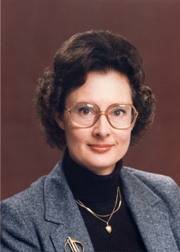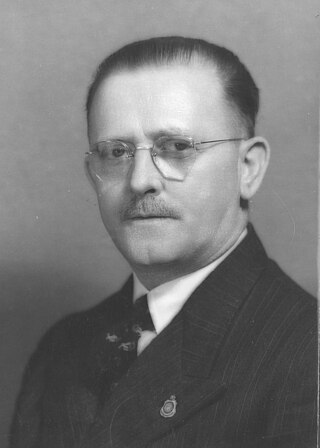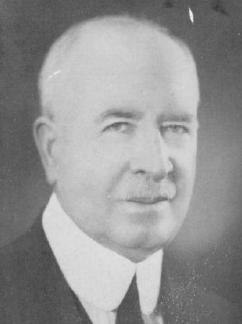In the Parliament of Australia, a casual vacancy arises when a member of either the Senate or the House of Representatives:

Janine Winton Haines, AM was an Australian politician who was a Senator for South Australia from 1977 to 1978 and again from 1981 to 1990. She represented the Australian Democrats, and served as the party's leader from 1986 to 1990, becoming the first female federal parliamentary leader of an Australian political party. She was pivotal in "shaping the Australian Democrats into a powerful political entity that held the balance of power in the Senate".
This is a list of the members of the Australian Senate in the First Australian Parliament, which was elected on 29 March 1901. There were 36 senators in this initial parliament. Terms were deemed to start on 1 January 1901. In accordance with section 13 of the Constitution, the Senate resolved that in each State the three senators who received the most votes would sit for a six-year term, finishing on 31 December 1906 while the other half would sit for a three-year term, finishing on 31 December 1903. The process for filing of casual vacancies was complex, with an initial appointment followed by an election. The status of political parties varied, being national, State based, and informal.

Elections were held on 5 December 1964 to elect members to half of the 60 seats in the Australian Senate. There was no accompanying election to the House of Representatives, as Robert Menzies had called an early House-only election the previous year. As with the previous Senate election, the Coalition held exactly half of the seats in the chamber; the Democratic Labor Party and independent senator Reg Turnbull held the balance of power.

Elections were held on 25 November 1967 to elect half of the 60 seats in the Australian Senate. There was no accompanying election to the House of Representatives as the two election cycles had been out of synchronisation since 1963. The results were a setback for the government of Harold Holt. Having won a landslide victory at the House-only election the previous year, the Coalition instead lost two seats in the Senate. The Labor Party failed to make any gains in Gough Whitlam's first election as leader; the Democratic Labor Party gained two seats and held the balance of power until 1974.

Alexander John McLachlan was an Australian politician. He served as a Senator for South Australia from 1926 to 1944, representing the Nationalist Party and United Australia Party. He held ministerial office in the Lyons government as Vice-President of the Executive Council (1932–1934), Minister in charge of Development and Scientific and Industrial Research (1932–1937), and Postmaster-General of Australia (1934–1938).
In politics, a casual vacancy is a situation in which a seat in a deliberative assembly becomes vacant during that assembly's term. Casual vacancies may arise through the death, resignation or disqualification of the sitting member, or for other reasons.

James Styles was a contractor, civil engineer and politician in Victoria, Australia.

James Michael Sheehan was an Australian trade unionist and politician.

Charles Walter Sandford was an Australian politician.
Arthur George Poyser was an Australian politician. Born in Ballarat, Victoria, he was educated at state schools in Geelong, after which he became a textile worker and tramway worker. He served in the military 1940–1941. From 1961 to 1966 he was Secretary of the Geelong Trades Hall Council. In 1966, he was appointed to the Australian Senate as a Labor Senator for Victoria, filling the casual vacancy caused by the death of Senator Charles Sandford. The Australian Constitution dictated that a special Senate election had to be held at the same time as the lower house 1966 election; Poyser and the Country Party's James Webster, appointed after the death of Harrie Wade, were required to stand for election. Both were successful. Poyser was re-elected in 1967 and 1974, remaining in the Senate until his retirement in 1975.

William George Thompson was an Irish-born Australian politician. He served as a Senator for Queensland from 1922 to 1932, representing the Nationalist Party and United Australia Party.
George Irvine Whiteside was an Australian politician.
William Clarence Heatley was an Australian politician.
John Peter Sim, was an Australian politician. Born in Colac, Victoria, he was a farmer in Western Australia before serving in the military 1941–1946. He was Vice-President of the Western Australian Liberal Party 1960–1962. On 26 November 1964, he was appointed to the Australian Senate as a Liberal Senator for Western Australia, filling the casual vacancy caused by the death of Senator Seddon Vincent. The Australian Constitution dictated that a special Senate election had to be held at the same time as the lower house 1966 election, but Sim was re-elected. He held the seat until his retirement in 1980.
Lawrence Degenhardt Wilkinson was an Australian politician. Born in Fremantle, Western Australia, he was educated at Perth Modern School, then the South Australian School of Mines and finally the University of Adelaide before becoming an electrical engineer. He was also a dairy farmer and telecommunications engineer. In 1966, he won the second of two seats at the special election for the Australian Senate to fill the vacancies caused by the deaths of Liberal Senators Sir Shane Paltridge and Seddon Vincent. Peter Sim and Reg Withers had been appointed to the vacancies, however the Australian Constitution had not been changed since the introduction of proportional representation in 1949 and dictated that an appointment to a casual vacancy was required to be re-contested at the next election. Even though both vacancies were due to the death of Liberal Senators, Labor, with 41.80% of the vote, was able to pick up the second seat, at the expense of Withers. Wilkinson was re-elected in 1967 and held the seat until his retirement in 1974.
This is a list of members of the Australian Senate from 1975 to 1978. The 13 December 1975 election was a double dissolution of both houses, with all 127 seats in the House of Representatives, and all 64 seats in the Senate up for election. Malcolm Fraser had been commissioned as prime minister following the dismissal of Gough Whitlam's Labor government by Governor-General Sir John Kerr, on 11 November 1975. The same day, Fraser advised the calling of the election, in accordance with Kerr's stipulated conditions. Thus the Liberal Party of Australia, led by Fraser, with Coalition partner the National Country Party, led by Doug Anthony, went to the election as a caretaker government. The election resulted in the Coalition securing government with a 30-seat swing away from Labor in the House of Representatives.
This is a list of members of the Australian Senate from 1923 to 1926. Half of its members were elected at the 13 December 1919 election and had terms starting on 1 July 1920 and finishing on 30 June 1926; the other half were elected at the 16 December 1922 election and had terms starting on 1 July 1923 and finishing on 30 June 1929.
This article provides information on candidates who stood for the 1966 Australian federal election. The election was held on 26 November 1966.
This article provides information on candidates who stood for the 1969 Australian federal election. The election was held on 25 October 1969.










